Kyoto Confectionery: 20 Japanese Sweets Like Works of Art

Kyoto's traditional confections reflect a deep connection to nature and the seasons. We introduce 20 famous traditional sweets (wagashi) from Kyoto and the shops where you can find them, as well as places that offer wagashi-making workshops.
Kyoto Confectionery Guide
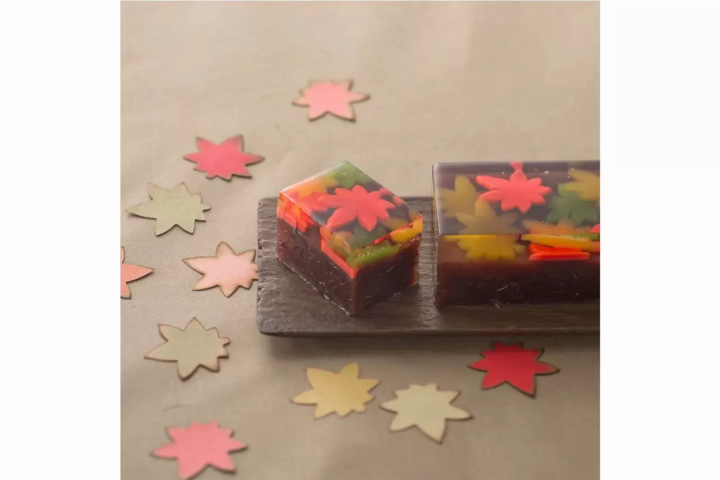
Autumn confection by Tsuruya Yoshinoby. Picture courtesy of PR Times
Since ancient times, the people of Kyoto have developed the custom to experience the seasons through cuisine. This seasonal awareness is also reflected in the traditional confections (wagashi) made in Kyoto known as Kyogashi (Kyoto-style confectionery).
Read on to learn 20 famous Japanese confectionery shops in Kyoto and their iconic sweets, along with places where you can experience making wagashi yourself.
Long-Established Kyogashi Shops
1. Kameya Kiyonaga
2. Kameya Yoshinaga
3. Tsuruya Yoshinobu
4. Sasaya Iori
5. Tawaraya Yoshitomi
Popular Traditional Sweets
6. Shogoin Yatsuhashi
7. Konpeito: Ryokujuan Shimizu
8. Mame-mochi: Demachi Futaba
9. Kyo-ame (Colorful Candy): Crochet
10. Wagashi Platter: Umezono
11. Daifuku: Yoshinoya
12. Ajarimochi Main Store Mangetsu
13. Kyo-fusen (Soft Crackers): Suetomi
14. Skewered Warabi Mochi: Kyo-Nishijin Kasho Sozen
15. Rakugan (Dry Confectionery): UCHU Wagashi Teramachi Main Store
16. Warabi Mochi: Saryo Hosen
17. Kuzukiri Desserts: Kagizen Yoshifusa
Hands-On Confectionery Workshops
Renowned Shop Requiring Prior Reservation
20. Shogetsu
1. Kameya Kiyonaga
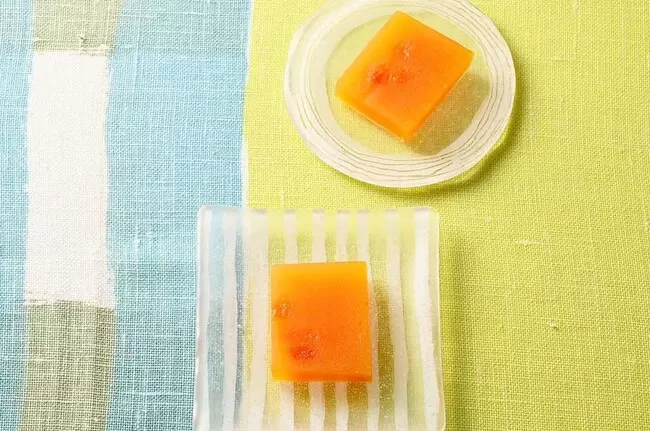
Picture courtesy of PR Times
Established in 1617 near Gion's Yasaka Shrine, Kameya Kiyonaga boasts a 400-year history and proudly embodies the essence of wagashi culture. It has been a witness to the flourishing of tea ceremony practices that had been brought to perfection by tea master Sen no Rikyu (1522-1591) and the development of the Kyogashi culture, which refers to traditional Kyoto sweets.
The shop is famous for its diverse range of seasonal yokan (sweet bean jelly) in various shapes, such as the popular "Starry Night" offered during the summer. To commemorate its 400th anniversary, the shop has launched a special confection called "SHOU" (shown in the picture above). This confection is a harmonious blend of traditional and Western influences, symbolizing the evolution of modern Japan.
Kameya Kiyonaga
Address: Kyoto City, Higashiyama, Gionmachi Minamigawa 534
Official website: https://www.kameyakiyonaga.co.jp/
2. Kameya Yoshinaga
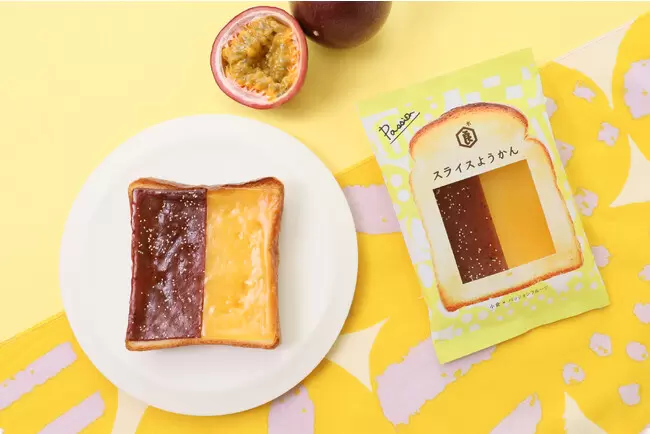
Picture courtesy of PR Times
With a history of over 200 years, Kameya Yoshinaga is located on Shijo Street. The first-generation owner chose the current location to take advantage of the clear water welling up at the shop's entrance. For the past 220 years, this excellent well water has been consistently used in the production of traditional Japanese sweets.
Carrying the weight of its long-standing reputation, Kameya Yoshinaga strives to maintain the traditions of Kyogashi while also embracing innovation. In the current era where Western-style desserts are popular, the shop collaborates with many businesses and hotels to explore new avenues for wagashi. In recent years, they developed the "sliced yokan," a sweet jelly slice that can be toasted on bread, creating a new way to enjoy wagashi.
The shop offers a variety of traditional wagashi, as well as wagashi-making classes, which can be booked at https://kameya-yoshinaga.com/f/tedzukuri. Please note that these courses are currently conducted only in Japanese.
Kameya Yoshinaga
Address: Kyoto City, Shimogyo ward, Nishikikoji-agaru, Kashiwaya-cho 17-19
Official website: https://kameya-yoshinaga.com/ (Japanese)
3. Tsuruya Yoshinobu
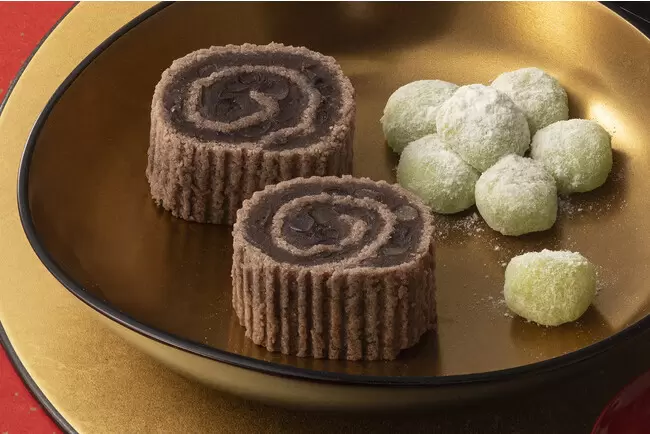
Kyo Kanze roll (left) and Yuzu Mochi rice cakes (right). Picture courtesy of PR Times
Established in 1803, Tsuruya Yoshinobu has a heritage of over 220 years. The shop became famous after the third-generation owner introduced the delightful Yuzu Mochi, small confections made of soft glutinous rice with a refreshing yuzu citrus aroma. The fourth-generation owner created a confection called Fukuwauchi, inspired by the traditions related to Setsubun; this sweet treat gained favor with Empress Shoken (1849-1914), enhancing the shop's reputation as a renowned Kyoto wagashi store.
Subsequently, they developed renowned classics like Kyo Kanze, a rich-tasting sweet bean paste roll, and Gosho Himuro, summer sweets that resemble colorful ice cubes. Tsuruya Yoshinobu continually pursues innovation, collaborating with various businesses to introduce seasonally themed yokan confections that resemble works of art.
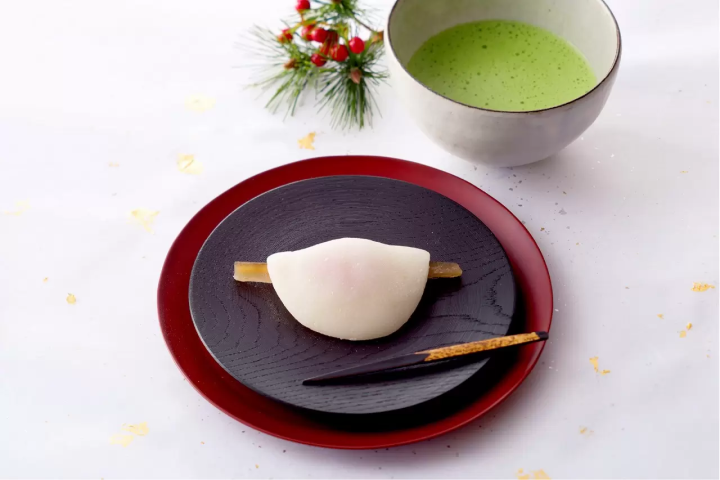
Hanabira Mochi. Picture courtesy of PR Times
Every year in December, Tsuruya Yoshinobu accepts orders for their popular New Year confection called Hanabira Mochi. This extremely delicate glutinous rice cake is filled with creamy white bean paste and a thin piece of burdock that gives it a refreshing taste. Hanabira Mochi confections are usually enjoyed at the first tea ceremony of the year.
In early January, the Tsuruya Yoshinobu shops located in major department stores also sell these delightful New Year confections. They tend to sell out quickly.
If you visit the Kyoto main store of Tsuruya Yoshinobu, drop by the store's Tsubara Cafe to enjoy tea and sweets on the spot. On the second floor of the cafe, visitors can savor tea while closely admiring the detailed craftsmanship of Kyoto wagashi artisans at work. This offers a profound and immersive experience, allowing guests to intimately appreciate the allure of wagashi.
Tsuruya Yoshinobu
Address: Kyoto City, Kamigyo ward, Nishifunabashicho 340-1
Official website: https://www.tsuruyayoshinobu.jp/
4. Sasaya Iori

Picture courtesy ofPR Times
Sasaya Iori, situated near Toji Temple, was established in 1716. The fifth-generation owner, entrusted by the head priest of Toji Temple, developed Dorayaki, a fully vegetarian sweet that can be enjoyed as a snack. This confection has now become one of the most representative desserts made by Sasaya Iori.
Embracing its rich history while keeping pace with the times, Sasaya Iori aims to elevate the techniques of Kyoto wagashi to new heights, leading to the establishment of the new brand Judaime Ihee Kaho. This brand integrates Western and Japanese dessert techniques, expressing the natural charm of Kyoto.
Sasaya Iori
Address: Kyoto City, Shimogyo ward, Shichijo Street, Omiyakita, Hanabatacho 86
Official website: https://www.sasayaiori.com/ (Japanese)
5. Tawaraya Yoshitomi

Unryu. Picture courtesy of Tawaraya Yoshitomi
The origins of Tawaraya Yoshitomi go back to 1745 at a rice and grain shop established by Tawaraya Sobee. The shop started to make high-quality confections for the noble houses of Kyoto in 1933. Their now iconic Unryu confection was highly acclaimed at the National Confectionery Exhibition in Yokohama in 1952; since then, the shop has specialized in Kyoto-style confectionery (Kyogashi).

Autumn-inspired namagashi confections. Picture courtesy of PR Times
They offer an extensive range of confections for every occasion. The ingredients for their confections--sugar, glutinous rice, and various types of bean paste--are selected with utmost care. Due to their excellent quality and sophisticated appearance, the confections made by Tawaraya Yoshitomi are often used at tea ceremonies and official events; they also make ideal gifts for weddings and other celebrations, and, of course, as souvenirs from Kyoto.
Tawaraya Yoshitomi operates the Kyoto Confectionery Museum, a facility with exhibits related to the history of confectionery in Kyoto. Visitors can also view incredibly intricate ornamental creations made of sugar by Kyoto's confectionery artisans.
Tawaraya Yoshitomi
Address: Kyoto City, Kamigyo ward, Muromachikashiracho 285-1
Official website: https://kyogashi.co.jp/ (Japanese)
6. Shogoin Yatsuhashi
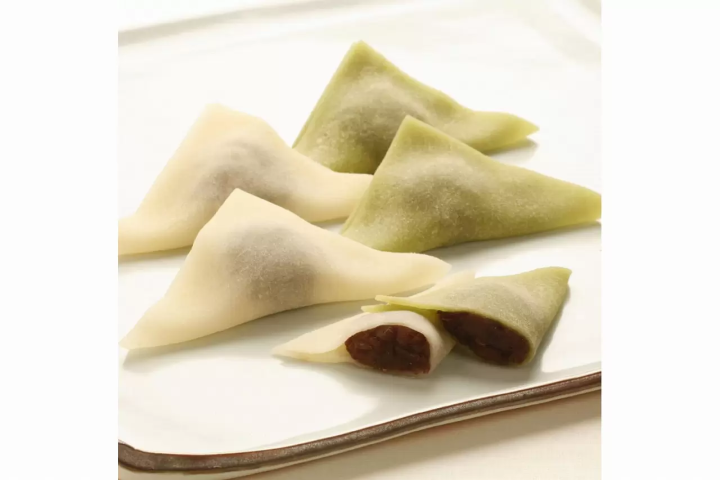
Picture courtesy of PR Times
Shogoin Yatsuhashi was established in 1689. The store became famous for its higashi (dry confections enjoyed with green tea) called Yatsuhashi, which are made with rice flour, sugar, and Japanese cinnamon.
Besides these traditional confections that are highly esteemed by Kyoto locals, they also make the popular soft triangle-shaped confections of glutinous rice with a bean jam filling. Available in seasonal variations, these confections have become one of the most popular souvenirs from Kyoto.
Shogoin Yatsuhashi
Address: Kyoto City, Sakyo ward, Shogoin Sannocho 6
Official website: https://shogoin.co.jp/en/
7. Konpeito: Ryokujuan Shimizu
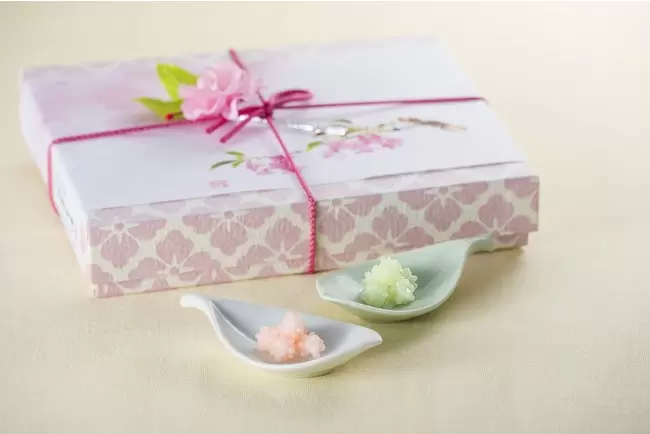
Picture courtesy of PR Times
Ryokujuan Shimizu, renowned for its konpeito sweets, is located near Kyoto University and was established in 1847. Konpeito are small, colorful bits of hard candy that look like beads. They were inspired by European candy that reached Japan in the Edo period (1603-1868).
In the shop's early days, the first-generation owner utilized small pots to make konpeito candy. It was not until the second generation introduced large pots that mass production began. The third generation was responsible for pioneering various flavors of konpeito sweets, including cinnamon and green tea. Subsequently, the fourth generation took on the challenge of using glutinous rice as a core ingredient.
Under the guidance of the fifth generation, Ryokujuan Shimizu has expanded its offerings to around 60 different flavors of konpeito sweets. Despite this accomplishment, the fifth generation remains driven, expressing the desire to continue to strive for improvement. The delicately crafted and appealing packaging makes them suitable for both gifting and personal enjoyment.
Ryokujuan Shimizu
Address: Kyoto City, Sakyo ward, Yoshida Izumidonocho 38-2
Official website: http://www.konpeito.co.jp/ (Japanese)
8. Mame-mochi: Demachi Futaba
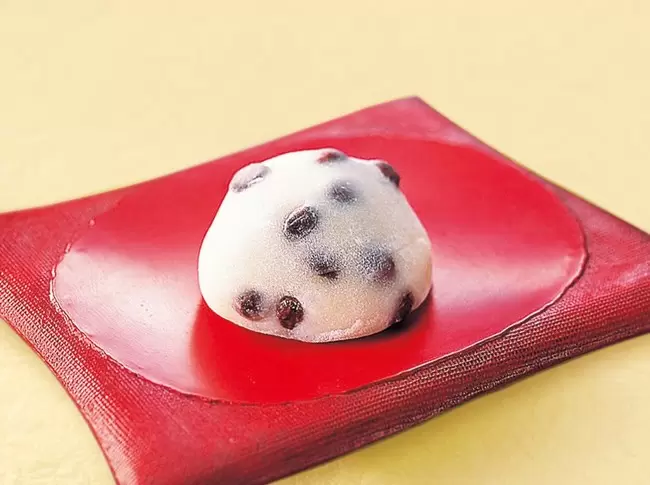
Picture courtesy of PR Times
Established in 1899, Demachi Futaba boasts a rich history of over a century and is renowned for its Meidai Mochi. Located at the entrance to Kyoto from Ohara, the shop has a storied past, with tales dating back to the Meiji era of women from Ohara purchasing these bean cakes to sustain themselves during their journeys to Kyoto. In the Taisho era (1912-1926), the reasonably priced bean cakes gained popularity among nearby university students.
Crafted with the finest new glutinous rice from the neighboring Shiga Prefecture the bean cakes undergo a meticulous process. The rice is steamed and pounded twice to achieve a luxuriously tender texture that stays soft even if purchased in the evening. The red bean filling is made from Hokkaido red beans, which are steamed and ground to create a delicate, smooth texture without dryness. Additionally, the outer skin incorporates a touch of red adzuki beans from Biei, Hokkaido, adding a subtle salty taste that complements the richness of the red bean paste and enhances the sweet fragrance of the glutinous rice cake.
Despite consistently drawing crowds, Demachi Futaba's efficient operations ensure that queues move swiftly, typically resulting in a wait of just around 10 minutes before making a purchase.
Demachi Futaba
Address: Kyoto City, Kamigyo Ward, Seiryucho 236
Offical website: https://tabelog.com/kyoto/A2601/A260302/26001520/ (Japanese)
9. Kyo-ame: Crochet

Picture courtesy of PR Times
The delightful Crochet brand of Kyo-ame (traditional hard candy) is a product of the renowned shop, Imanishi Seika, with over 140 years of history.
This brand expertly blends Kyoto tradition with European techniques to craft individual pieces of Kyoto candy that are akin to works of art. With an extensive range of flavors and intricate designs, selecting just one is a delightful and satisfying challenge.
Crochet
Address: Kyoto City, Shimogyo-ku, Ayakoji Tomikoji Higashi-iru, Shioyacho 69
Official Website:http://crcht.com/ (Japanese)
10. Wagashi Platter: Umezono
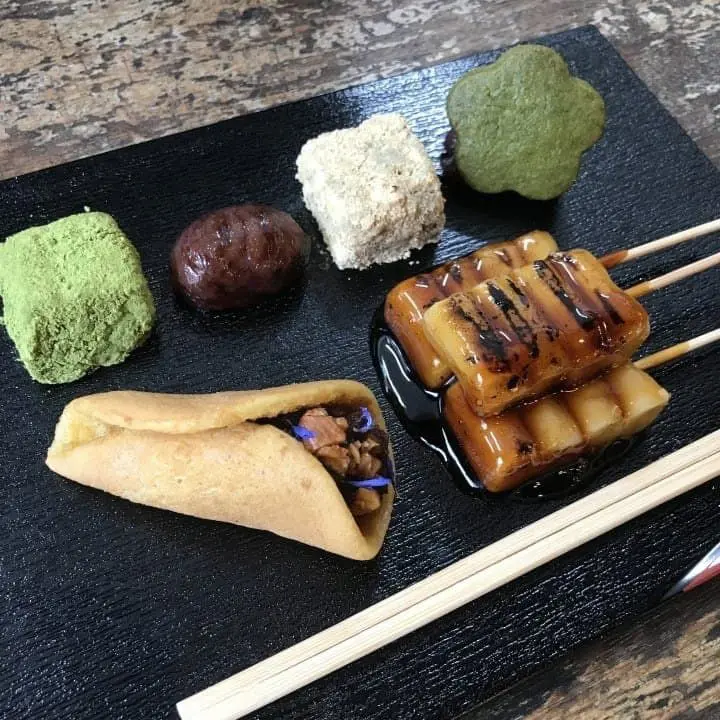
Umezono is a renowned dessert cafe with several locations in Kyoto, celebrated for its exquisite traditional Japanese confections. Patrons can indulge in an array of authentic Japanese sweets, complemented by a selection of beverages including black tea, coffee, and green tea, making it a favored spot for locals seeking a delightful afternoon tea experience.
Notably, the Sanjo Teramachi branch offers an exclusive flower-themed dessert set priced at 980 yen, featuring a delightful assortment of Umezono's signature treats. For those eager to experience an array of traditional Japanese sweets all in one setting, this venue is a must-visit destination!
Umezono Sanjo Teramachi Store
Address: Kyoto City, Nakagyo Ward Tenshojimaemachi 526
Official Website:https://umezono-kyoto.com/sanjo/ (Japanese)
11. Daifuku: Yoshinoya
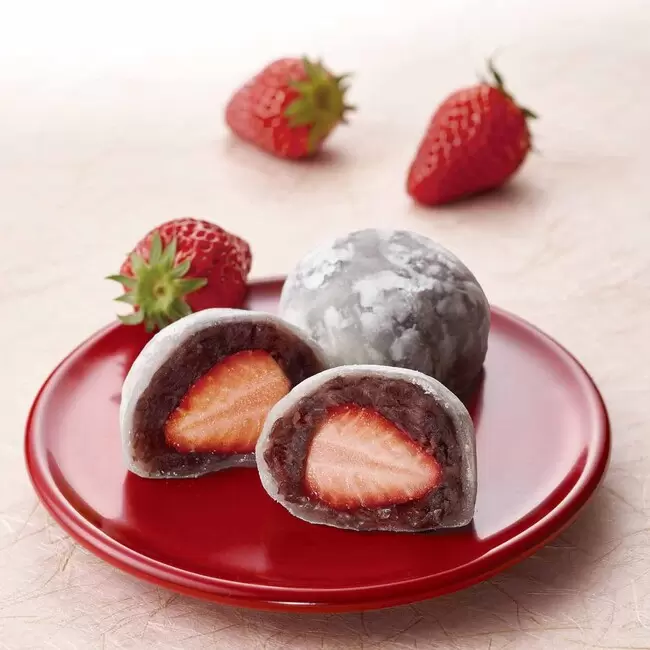
Picture courtesy of PR Times
Just a brief stroll from the Kitaoji Station on the Karasuma Line, Yoshinoya has been serving discerning patrons since the early years of the Showa era (1926-1989).
Specializing in meticulously crafted traditional Japanese confections, their most renowned creation is the Mikan Daifuku, beloved by numerous celebrities. This delicacy boasts a tender outer layer embracing a whole mandarin orange, with the gentle sweetness of the white bean paste harmonizing perfectly with the citrus's subtle acidity. Alongside the Mikan Daifuku, the Strawberry Daifuku also enjoys great popularity.
Yoshinoya
Address: Kyoto City, Kita ward, Koyama Higashi Onocho 54
Official website: https://kyoto-yoshinoya.com/ (Japanese)
12. Ajari Mochi: Mangetsu
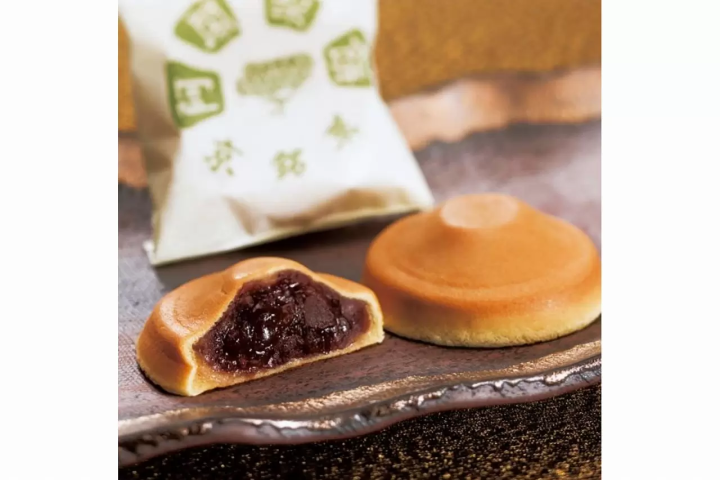
Picture courtesy of PR Times
Ajari Mochi are a type of Kyoto confectionery made with soft rice flour dough and high-quality red bean paste filling. The bean paste used is a famous product of the Tamba region near Kyoto. These sweets were first created in the Taisho period (1912-1926) and were named Ajari because they resemble the bamboo hats worn by Mt. Hieizan ascetics ("ajari" means "high-ranking Buddhist monk who practices mountain asceticism").
These delightful cookies are made by Mangetsu, a confectionery store established in 1856. They are renowned for other iconic confections such as Mangetsu (named after its shape inspired by the full moon), Kyonagon (a high-quality red bean paste treat), and Monaka (a waffle confection generously filled with flavorful bean paste).
Mangetsu Main Store
Address: Kyoto City, Sakyo ward, Tanaka Oicho 139
Official website: http://www.ajyarimochi.com/ (Japanese)
13. Kyo-fusen (Soft Crackers): Suetomi
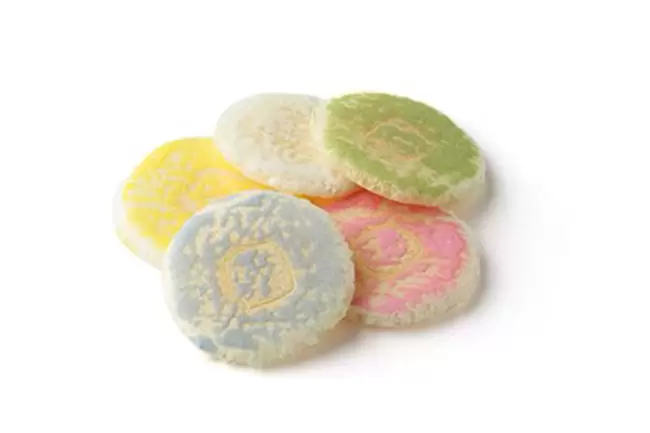
Picture courtesy of PR Times
Since its establishment in 1893, Suetomi has been committed to crafting delectable and aesthetically pleasing Kyogashi, guided by the distinctive idea of creating a "world of dreams and joy."
Among their timeless creations is the Kyo-fusen (Kyoto "balloon"), a confection inspired by the elegant hues of courtly garments from the Heian period (794-1185). These delicate senbei (rice crackers) are adorned with a soft palette of traditional Kyoto colors, captivating the hearts of numerous admirers.
Suetomi
Address: Kyoto City, Shimogyo ward, Shijo Street, Eastern Entrance of Matsubara Street
Offical website: https://www.kyoto-suetomi.com/ (Japanese)
14. Skewered Warabi Mochi: Kyo-Nishijin Kasho Sozen
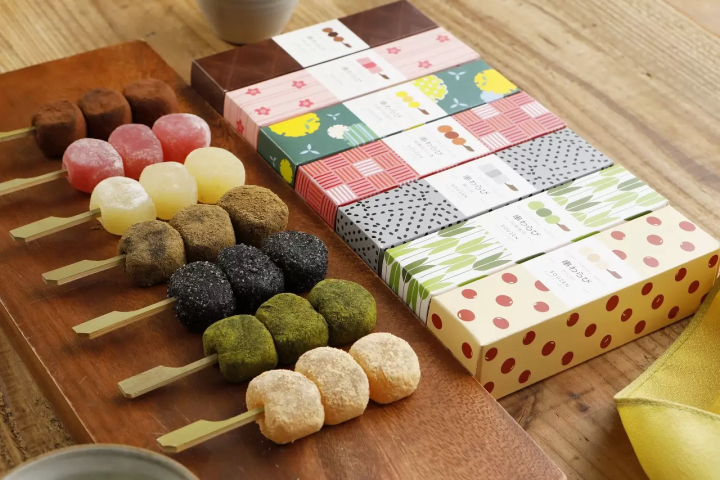
Picture courtesy of PR Times
The founder of Kyo-Nishijin Kasho Sozen, Mr. Yamamoto Sozan, hails from Osaka where he was the fourth-generation head of a century-old mochi (glutinous rice confections) specialty store. Driven by a steadfast commitment to crafting authentic mochi confections, he ventured to Kyoto and carefully selected Nishijin, an artisan district, as the location for his establishment.
In addition to his dedication to perfecting the art of mochi confections, Mr. Yamamoto devoted five years to perfecting the Skewered Warabi Mochi, a delicacy designed to maintain its qualities at room temperature over time. Now, even international travelers can enjoy this exquisite traditional Japanese sweet and share its delights with loved ones back home!
Kyo-Nishijin Kasho Sozen
Address: Kyoto City, Kamigyo ward, Fukuji Eastern Corner
Official website: https://souzen.co.jp/ (Japanese)
15. Rakugan (Dry Confectionery): UCHU wagashi Teramachi Main Store

Picture courtesy of PR Times
Established in 2010 by Kyoto native Kimoto Katsuya, UCHU wagashi is a Japanese confectionery shop with a unique vision. Mr. Kimoto's concept for UCHU wagashi is to craft Rakugan (dry confectionery) items that evoke excitement and joy, aspiring to create timeless pieces that remain refreshing even after a century.
Using a diverse array of colored, fine Japanese sugar (wasanbon), Mr. Kimoto deliberately shapes them into small fan-shaped pieces, which he aptly calls "drawings." This deliberate fan shape allows for imaginative combinations, yielding various captivating patterns and designs.
For instance, during Christmas, these pieces can be artfully arranged to form a charming Christmas tree, while in summer, they can be assembled into delightful fish shapes, evoking a different set of seasonal scenes.
UCHU wagashi Teramachi Main Store
Address: Kyoto City, Kamigyo ward, Teramachi-dori, Marutamachi-agaru, Shinfukucho 307
Official website: http://uchu-wagashi.jp/ (Japanese)
16. Warabi Mochi: Saryo Hosen

Photo by Pixta
Hosendo is a celebrated traditional Japanese confectionery shop in Kyoto, renowned for its take-out services. Their affiliated tea house, Saryo Hosen, is a cozy café known for its delectable brown sugar warabi mochi desserts.
Savoring the delicate and refreshing desserts at Saryo Hosen in a meticulously renovated century-old building offers an unforgettable experience for visitors to Kyoto.
Visitors should be aware that, to uphold the serene dining atmosphere, only children of elementary school age and above, capable of maintaining a quiet demeanor, are permitted to occupy designated tables.
Saryo Hosen
Address: Kyoto City, Sakyo Ward, Shimogamo Nishi Takagi-cho 2525
Official website: https://housendo.com/ (Japanese)
17. Kuzukiri Desserts: Kagizen Yoshifusa
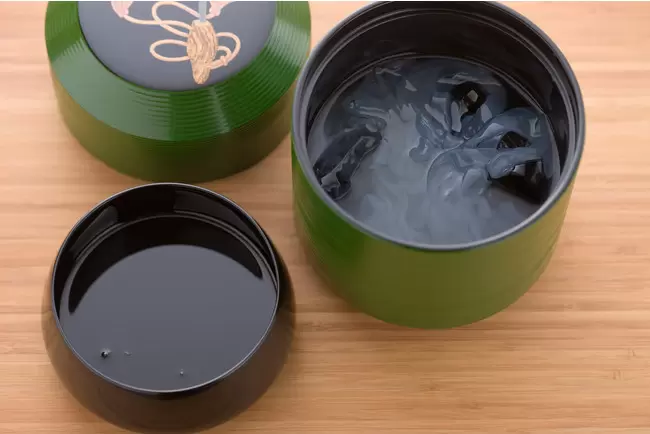
Picture courtesy of PR Times
Kagizen Yoshifusa has a rich history dating back to the early 18th century. Throughout relocations and times of war, the commitment to meticulous ingredient selection has remained constant. They carefully source high-quality sugar from Awa City, authentic kudzu powder from Yoshino in Nara, and brown sugar from Okinawa. By following traditional methods, these practices result in delectable kuzu mochi with a cool, elastic, and smooth texture.
Kagizen also operates the ZENBI Kagizen Art Museum in Gion, which displays precious works of art and ceramics by contemporary artists, as well as documents and artifacts related to the history of Kagizen.
Kagizen Yoshifusa
Address: Kyoto City, Higashiyama Ward, Gionmachi Kitagawa 264
Official website: https://www.kagizen.co.jp/
18. Hands-On Confectionery Workshops at Kanshundo

Picture courtesy of PR Times
Founded during the Edo period (1603-1868), Kanshundo has upheld a long-standing tradition of creating authentic Kyoto confections, serving local shrines and temples. Over time, they have gained recognition for their iconic treats such as Daibutsu Mochi or the tea-bowl shaped confection Chaju-no-utsuwa.
In recent years, the company has embraced the mission to celebrate and promote wagashi culture. They have established two wagashi-making experience venues in Kyoto, actively pursuing innovation. Furthermore, they have introduced red bean jam, aiming to bring the essence of wagashi flavors into daily life.
Kanshundo Main Store
Address: Kyoto City, Higashiyama ward, Kamihoritsumecho 292-2
Official website: https://www.kanshundo.co.jp/ (Japanese)
19. Cultural Workshops at AN KYOTO
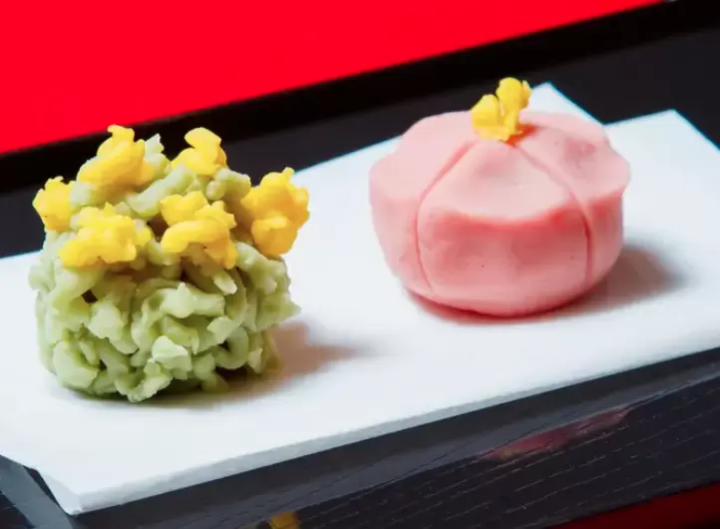
Picture courtesy of Klook
AN KYOTO offers a unique Japanese cultural experience that goes beyond traditional wagashi shops. Here, visitors can immerse themselves in the hands-on process of creating their own sweets.
Each participant has the opportunity to craft two wagashi that reflect the seasonal essence of Kyoto, using premium sweet bean paste sourced from renowned Kyoto establishments. This hands-on experience enables individuals to tailor their own personalized wagashi with ease.
AN KYOTO
Address: Kyoto City, Shimogyo ward, Manjujicho 135 Berg Karasuma Building 2
Book the activity: Traditional Japanese Sweets Making Workshop
20. Shogetsu: Renowned Shop Requiring Prior Reservation
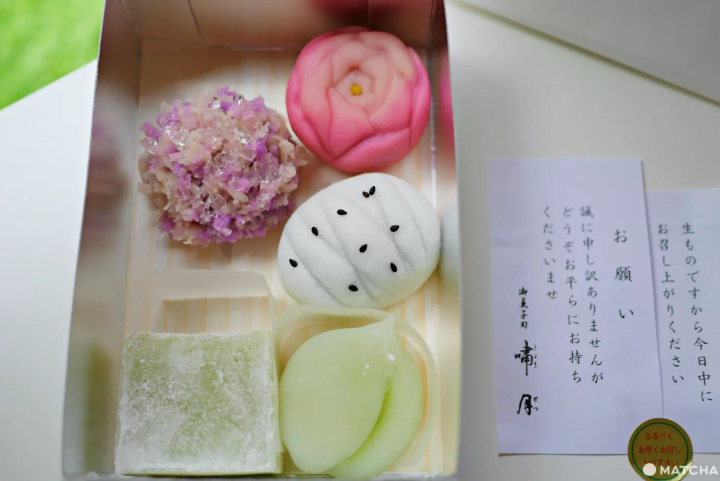
Established in 1916, Shogetsu has a history of over a hundred years. The first-generation owner established his shop after apprenticing at the famous Kyoto confectionery shop Toraya, which boasts a 400-year history. The name "Shogetsu" is derived from the imagery of a tiger howling at the moon, inspired by his connection to the venerable Toraya ("tora" means "tiger" in Japanese).
Shogetsu specializes in namagashi, a type of raw Japanese confectionery made using sweetened bean paste and rice flour. The bean paste is molded by hand into delicate shapes making every confection a small work of art. The namagashi confections are typically enjoyed during tea ceremonies along with thick and creamy koicha green tea.
In order to provide customers with confectionery of the best quality, Shogetsu does not display its products on the store premises when it opens. Instead, the sweets are made to order, following a completely reservation-based system.
Although purchasing their confectionery requires a reservation via phone in Japanese, Shogetsu remains one of the top Kyoto-style confectionery shops in the hearts of many locals. If your schedule allows it, it's worth trying to make a reservation!
Shogetsu
Address: Kyoto City, Kita ward, Murasakino, Kamiyanagi-machi 6
Website: https://tabelog.com/kyoto/A2601/A260503/26001672/ (Japanese)
Enjoy Kyoto's Delightful Sweets
Drawing from a robust heritage in wagashi culture, Kyoto has cultivated an increasingly diverse and vibrant array of Kyoto sweets (Kyogashi). Whether it's the stunning visual representation of Kyoto's nature in premium confections or the understated yet seasonally inspired sweets that seamlessly integrate into daily life in Kyoto, the genuine artistry of these creations awaits your discovery in the heart of Kyoto.
Read also
Main image courtesy of PR Times
I used to live in Japan and managed to conquer 78 out of the 100 famous castles and 12 existing castle towers in 8 years. As a history enthusiast, I also have a passion for baseball and Japanese dramas, which have driven me to visit all 47 prefectures. I hope to convey not only the scenery of Japan but also more of its culture and way of life.




































![[2026] Top 5 Strawberry Picking Spots in Tokushima, Naruto| Farms and Access Guide for January to May](https://resources.matcha-jp.com/resize/720x2000/2025/03/06-227165.webp)
![[Yamanashi/ Hokuto City] 4 Hot New Spots Opening in 2026](https://resources.matcha-jp.com/resize/720x2000/2025/12/12-252747.webp)


